______________
DAWN or THE AWAKENING OF SPRING -
Included (No. 91) in the 1877 Sales Catalogue of Bronze Models (..) Following the Cessation of Trade of Mr. POPON Père*, this beautifully designed table clock titled Aurore unquestionably belongs to the brilliant corpus of Louis XV-inspired timepieces created in the 1850s and 1860s by G. Denière, L. Marchand, V. Paillard, and Raingo*, distinguished representatives under the Second Empire of the prevalence and excellence of French Art Bronze furniture in European Decorative Arts.
Sculptural, it features, at the heart of its ample case with shaped fretwork profiles, traversed by enveloping Rocaille motifs chiseled with joy, two pleasing, plump, firmly modeled children. Lithely planted on acanthus leafy volutes, these attractive childlike figures, their hips and busts wreathed in swirling fabrics, are eager to lift branches adorned with blooming spring flowers, surmounting an opulent shell with wavy edges. Encircled by palms, acanthus crosiers, half-shells, and fins with rudentée shells with carefully arranged openwork, the clock's bushel, ornate in its lower part against a guilloché trellis background, accommodates the dial, adorned with wavy edges. At its end, nestled beneath a canopy of flowering leaves, a delightful cherub takes his place. Symbolizing Dawn, he lifts with exquisite, coaxing gestures the headband still encircling his forehead with his caressing face. Rudentures, oves, and clasps adorn the back of the timepiece, stamped with a leafy cartouche centered on a mirror. This entire composition, with its tried-and-tested formal style, rises on a curvilinear base enlivened by generous scrolls, openwork grained acanthus foliage, and rudenté half-shells forming the base. In 1855, in his "Descriptive or analytical work of the most remarkable products of the 1855 Exhibition", Henri Boudin, upon seeing the "beautiful clocks" exhibited during this major event by Nicolas Popon, wrote: "We are no longer in the time when volume and material constituted the principal value of a bronze for furniture (...) the grace of the forms, the stamp of originality, the brilliance, the elegance, the arrangement, the harmony, the intelligence of the ornamentation and the composition, the understanding of the detail and the whole, such are the only qualities called upon to give value to a bronze today. Mr. Popon understood, nothing is more remarkable than his products which, thanks to this perfection and this taste with which they are worked, will always be ranked in the first line (...)". (The Palace of Universal Industry, 1855, p. 191). These insightful remarks fit the clock presented, which aptly combines, under the guise of an attractive allegorical subject, powerful and restrained lines, controlled ornamental luxuriance, and the playful charm of childlike figures.
* Catalogue of Bronze Models/Clocks, Candelabras, Chandeliers, Lamps; Groups, Statuettes, Bases, Andirons, Laternes, Suspensions, Planters/whose Sale will take place/Due to Cessation of Trade/ by Mr. POPON Père (...) on Monday, June 4 and Tuesday, June 5, 1877 (...). Paris: 1877, 8 p.
* See Klejberg, Pierre, Encyclopédie de la Pendule Française, Paris: Ed. de L'Amateur, 1997, p. 468 (fig. B), pp. 471-472 (fig. E-G and B-D); - L'Art en France Under the Second Empire - Cat. Expo., Paris, Grand-Palais, May-August 1979 - Furniture Bronzes, pp. 152-153 (Nos. 71 and 72).
_________________
POPON, Nicolas (1815-1885) - Born into a modest family in a rural hamlet in Côte-d'Or (Jailly-les-Moulins), Nicolas Popon, over a half-century of industrial and artistic emulation, acquired esteem and notoriety among both the inner circle of Furniture Bronze Manufacturers in the capital and among enthusiasts who appreciated the particular "aestheticism" of his creations.
He came to the capital, still a teenager, where he trained in the humble profession of "watchmaker," and in 1844, having become seasoned in this field, he founded his own Atelier 44 on rue Charlot, in the heart of the industrious Marais district. To his "Factory of all kinds of clocks and watches, precision clocks" (1844-1851), he added from 1852 that of "Bronzes" now offering in a "Store" opened at number 77 of the same street "Clocks, torches, Cups, Candelabras and Statuettes". The year 1855, with his participation in the Universal Exhibition of Paris, augured his flourishing career like those of "this phalanx of men - Messrs. Delafontaine, Lerolle, Marchand, Charpentier, Raingo, .. - who won the greatest suffrages of this more than European public, called at all times within the walls of the Palace of Industry". Favorably noted for "its specialty of Sèvres gros bleu porcelain mounts, of which it has the most beautiful assortment in clocks, lamps and vases", it will stand out with a "clock with the emblematic Loves of the Seasons" with a "white marble globe rotating on itself" with a snake forming the base". Unanimously praised, N. Popon will be awarded a Medal of Honor. Subsequently, at the head of "one of the richest Bronze Establishments on rue Charlot (..)" where "he employed - in premises established at 23, rue Saintonge - "200 to 250 workers", he will be awarded a Bronze Medal at the Universal Exhibitions of 1862 (London), 1867 and 1878 (Paris) for his achievements with an "original approach" combining "excellence of chasing," "elegance of form" and "richness of gilding". Honored with other functions and mandates (President of the Society of Watchmakers of Paris, Administrator of the Caisse d'Epagne, Municipal Councilor of Vincennes), he will associate in 1871 under the company name "POPON ET FILS" with his flourishing Factory of Bronzes of Art Furniture, his son, Charles (1844-1912) -, who will maintain as "Bronzier-Merchant" the activity of the House until 1883. Gradually withdrawing from business, he will organize the sale (1874, 1875 and 1877) of his "Models" and during the year 1880 will cede his workshops to Mathieu PLANCHON (1842-1921), owner "of one of the most important and renowned Houses of Watchmaking and Jewelry in Paris". Having become Mayor (1881) of his native hamlet, he died there in May 1885. In summary: Nicolas POPON: a name to be restored to the Pantheon of the Bronze Art Industry - A signature that is a guarantee of quality.
___________________
Signatures: Numbered "2706", the movement bears, engraved on its plate: the stamp of: "POPON/ in PARIS" - and the Watchmaker's Stamp: "S. MARTI/ BRONZE MEDAL" -
Materials: Chiseled and gilded bronze; enamel.
Dimensions: H.: 49 cm; W.: 53 cm; D.: 20 cm.
Quality Parisian work in the Neo-Louis XV style from the second half of the 19th century. Napoleon III period, circa 1860
Good overall condition. Original gilding.


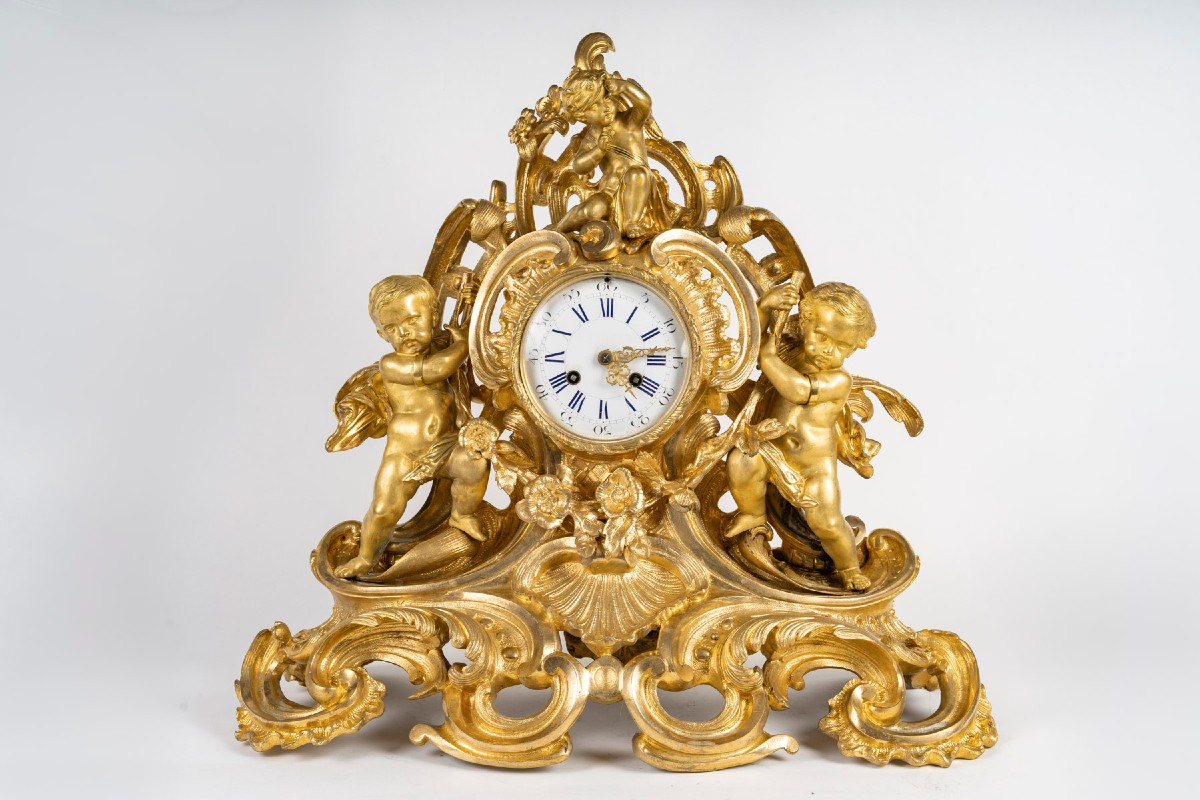
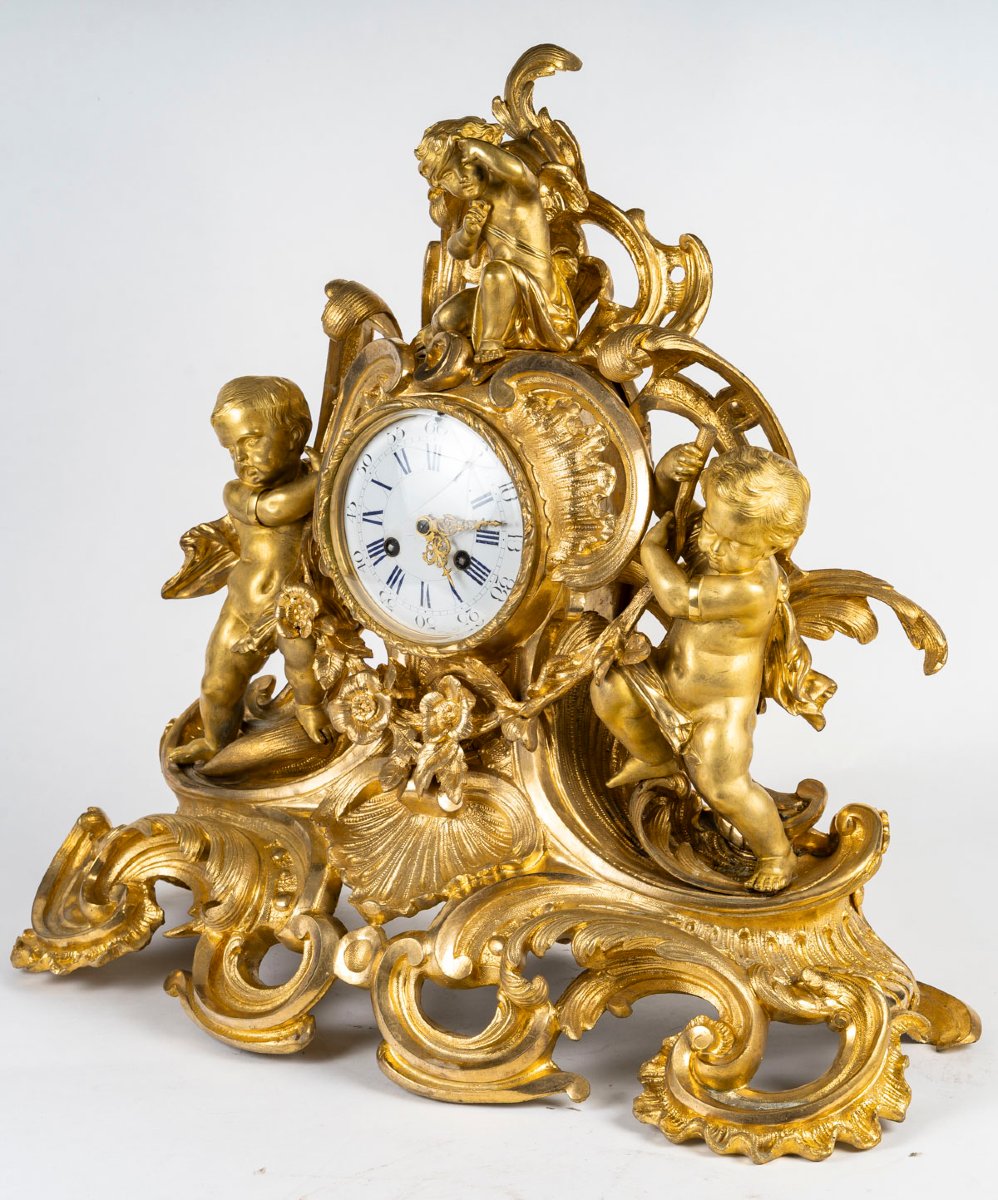

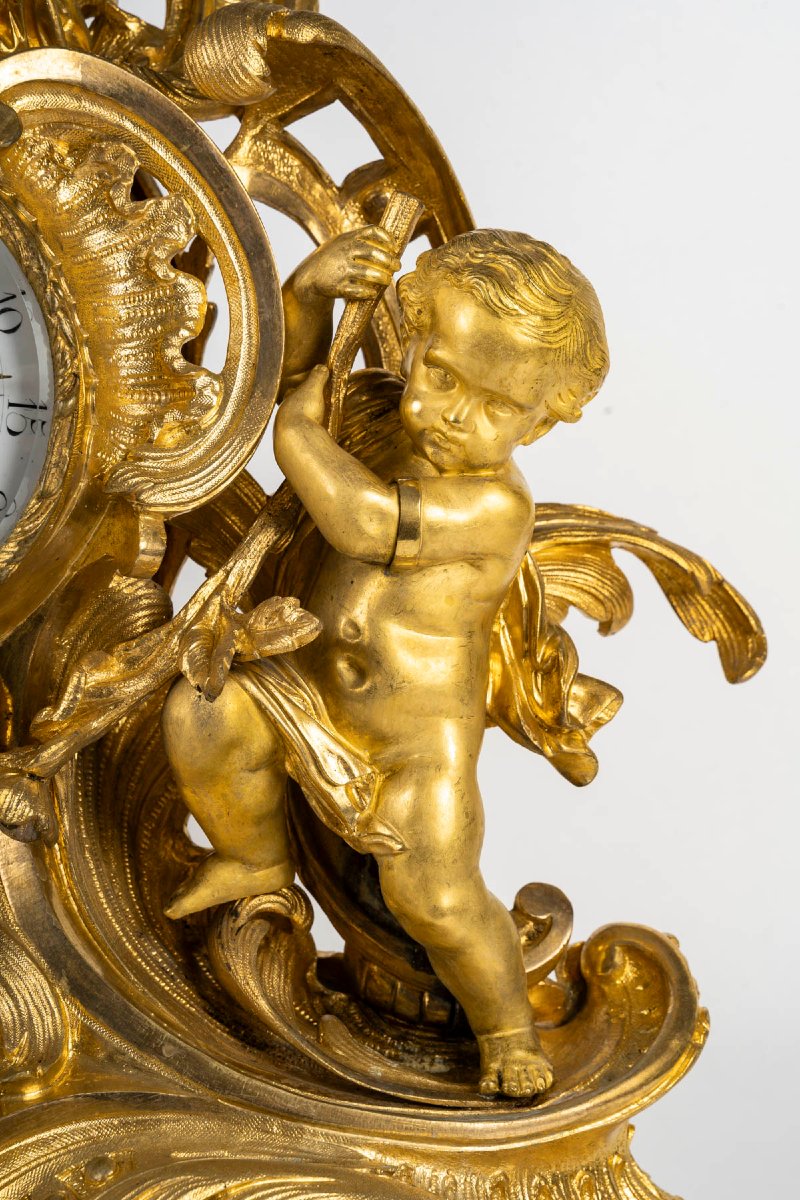
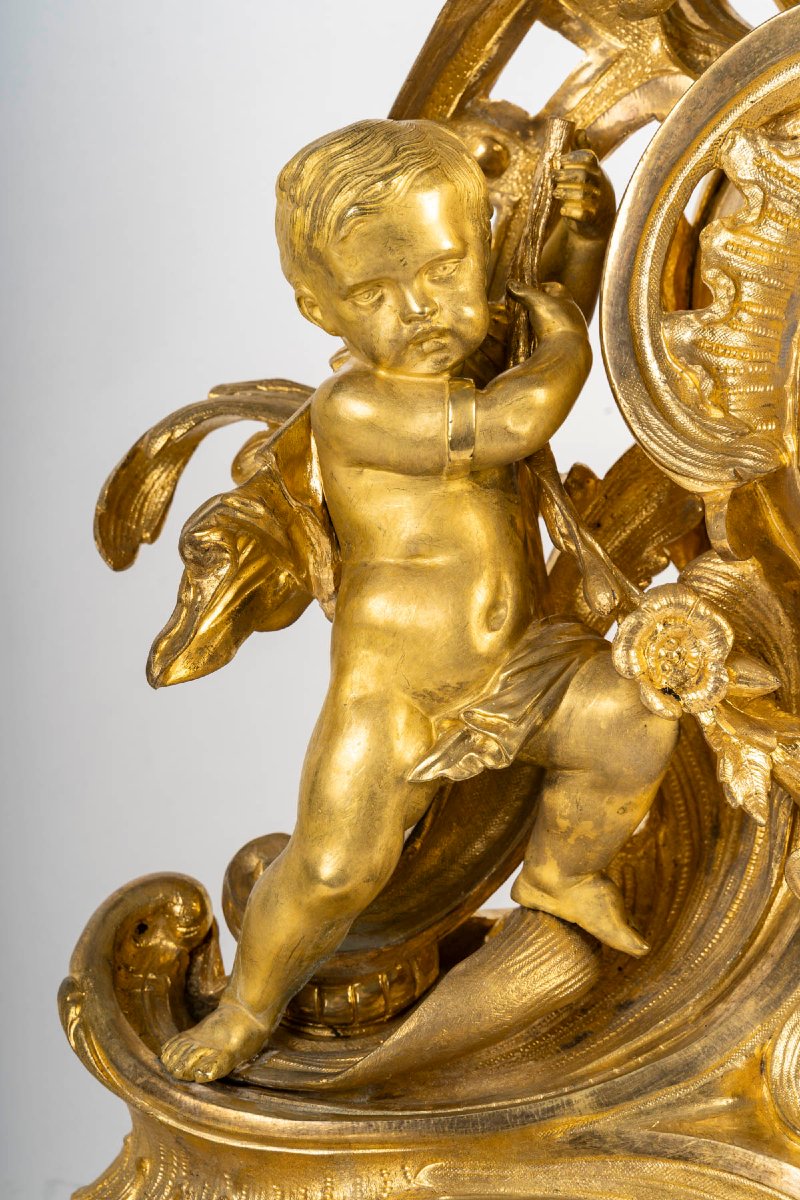
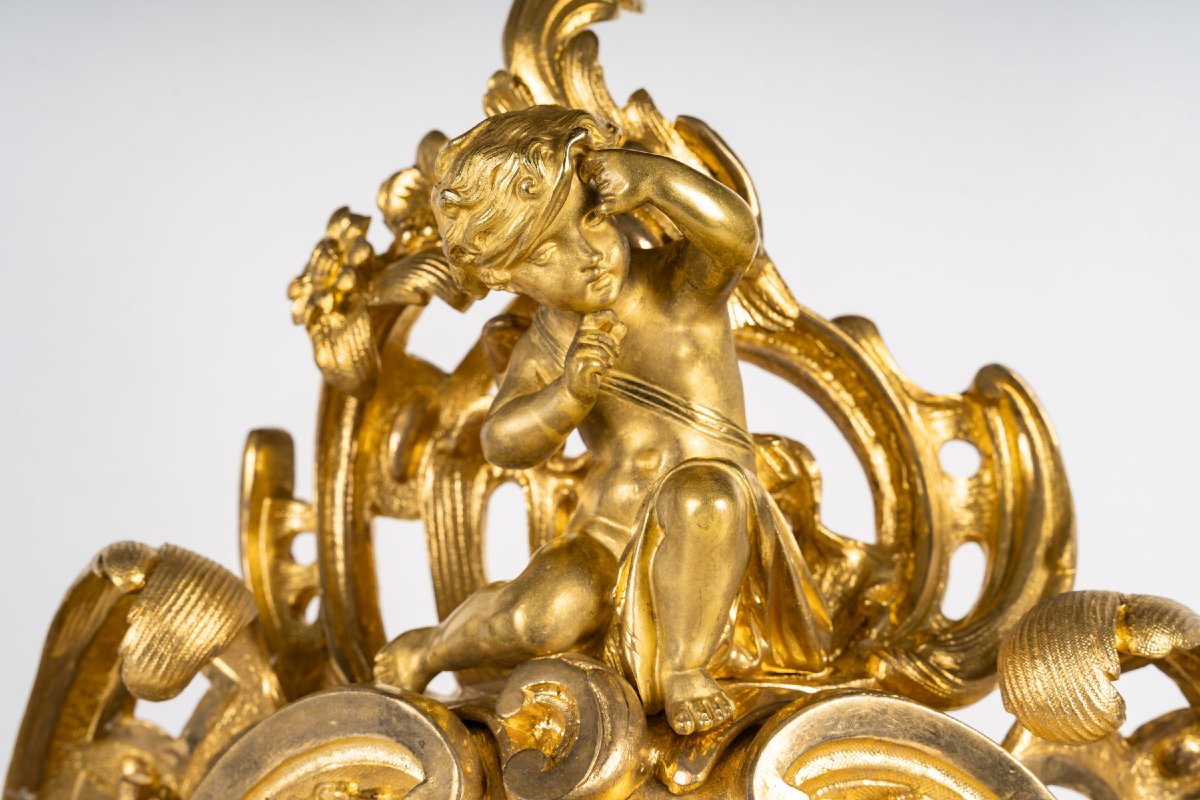
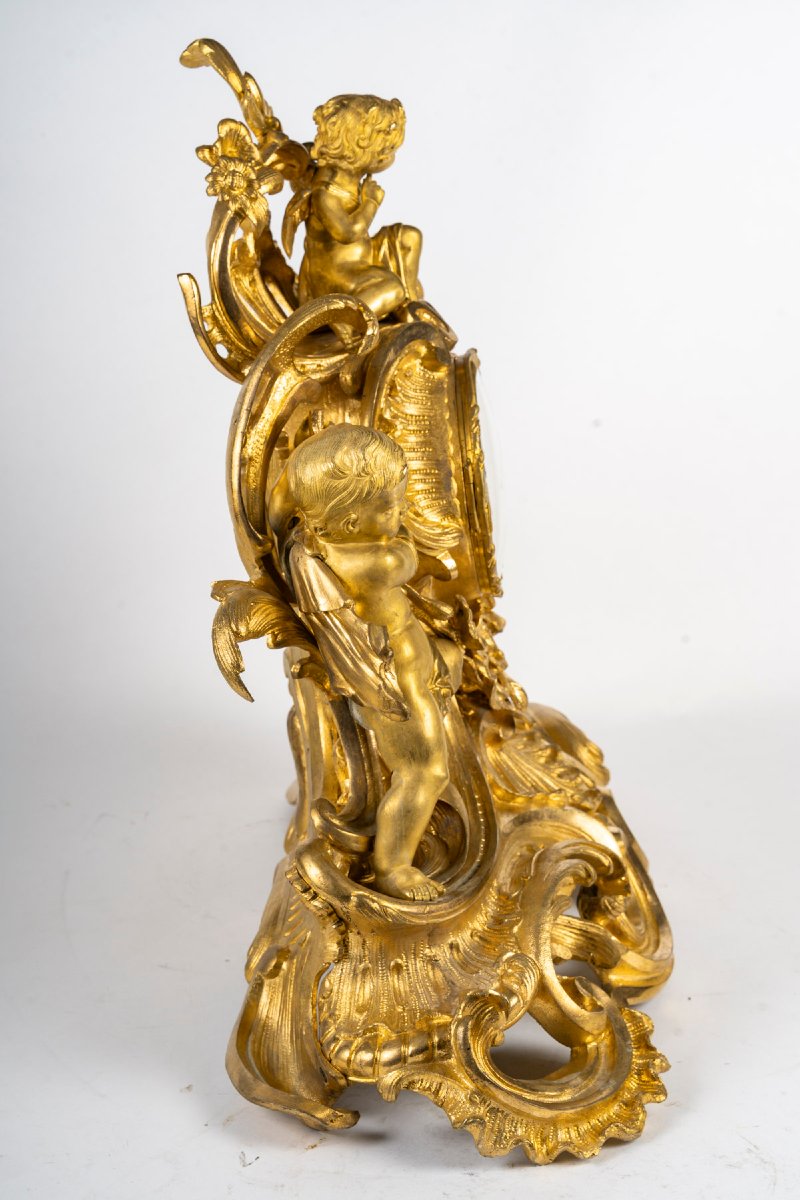
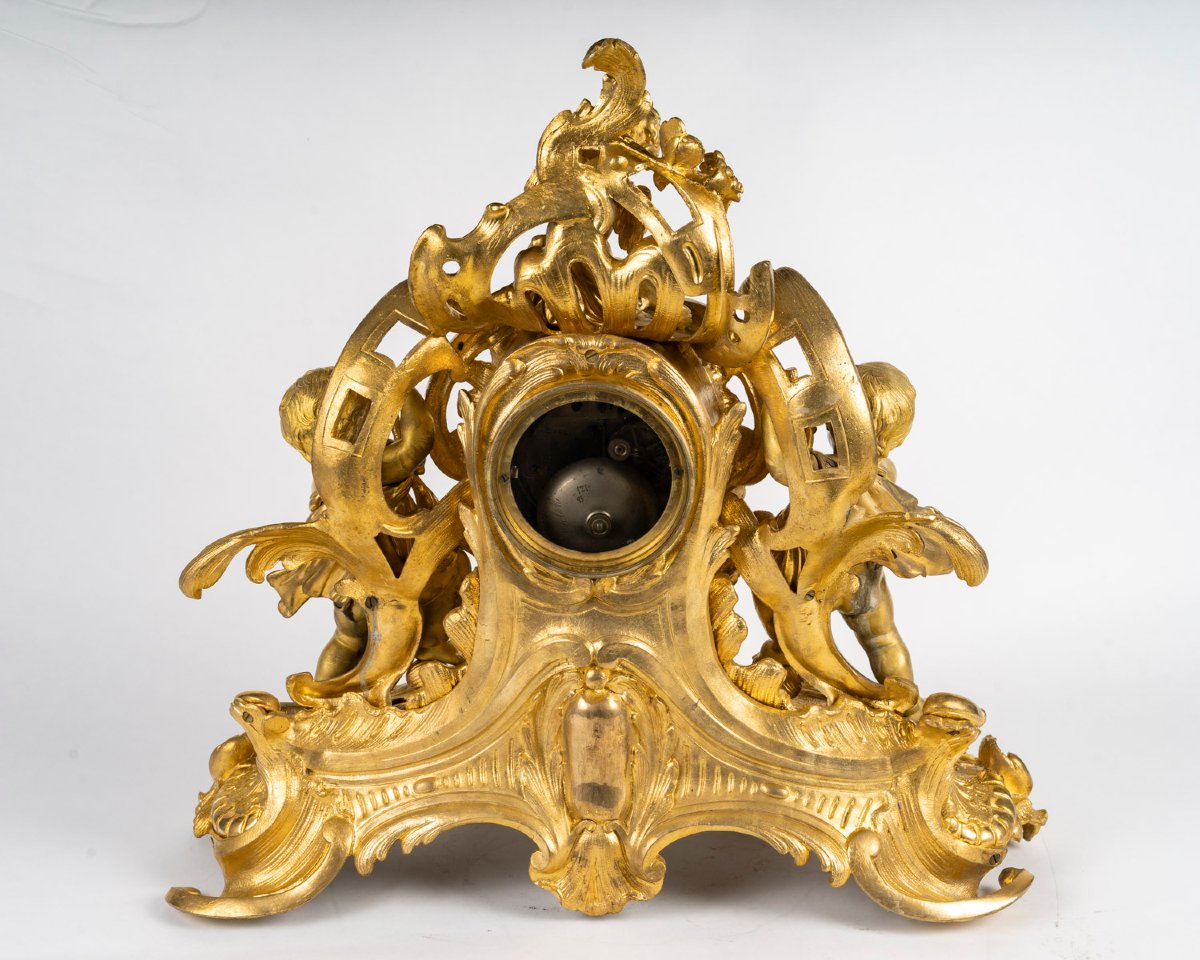









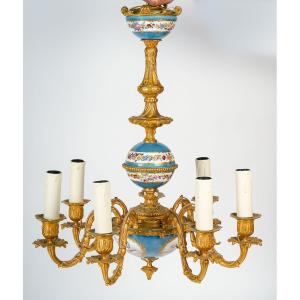
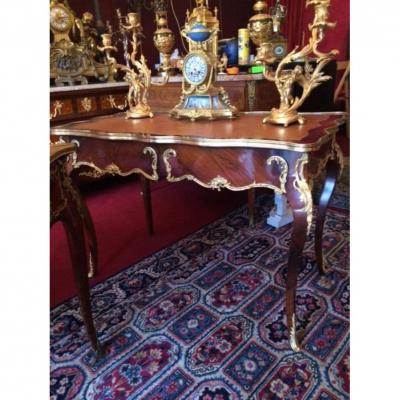





















 Le Magazine de PROANTIC
Le Magazine de PROANTIC TRÉSORS Magazine
TRÉSORS Magazine Rivista Artiquariato
Rivista Artiquariato